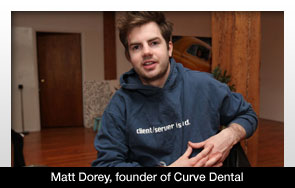 |
In early 2008, Matt Dorey, founder and chief executive of Curve Dental, was at a loss. Three years into building a comprehensive Web-based software package for dentists, he felt the product was ready, but he was not sure how to make Curve a market leader.
“The company was getting complicated,” Dorey said. “I was starting to become conscious of what I didn’t know. It was almost a feeling of loneliness.”
Then he learned of a chief executive, Jim Pack, who was looking for new opportunities after a private equity firm had bought his medical-billing software company, AdvancedMD. Dorey reached out with a LinkedIn invitation.
“This was someone I had been following for four years,” he said. “He was really open about sharing knowledge and letting us know about the challenges we face. I immediately knew there was nobody better to be the C.E.O. of this company.”
Dorey enlisted his board and top executives in a months-long campaign to woo Mr. Pack, who ultimately agreed. Since Mr. Pack took over as chief executive in January 2009, Curve Dental has more than doubled in staff and has introduced its software to the American market, gaining share in more than 40 states and increasing its customer base fivefold. Picking the right replacement, Mr. Dorey said, “was the most important decision I’ve ever made at Curve and probably will ever make.”
Turning over your company to a successor is not to be taken lightly. And in many cases, sticking it out might be the better option, especially if you can delegate those parts of your job that have become unmanageable. But in some instances replacing yourself at the helm makes sense. Based on the experiences of small-business owners, this guide offers suggestions on how to make that decision and accomplish the transition as painlessly as possible.
For the entire story, visit: http://www.nytimes.com/2010/12/23/business/smallbusiness/23sbiz.html?src=busln

|


